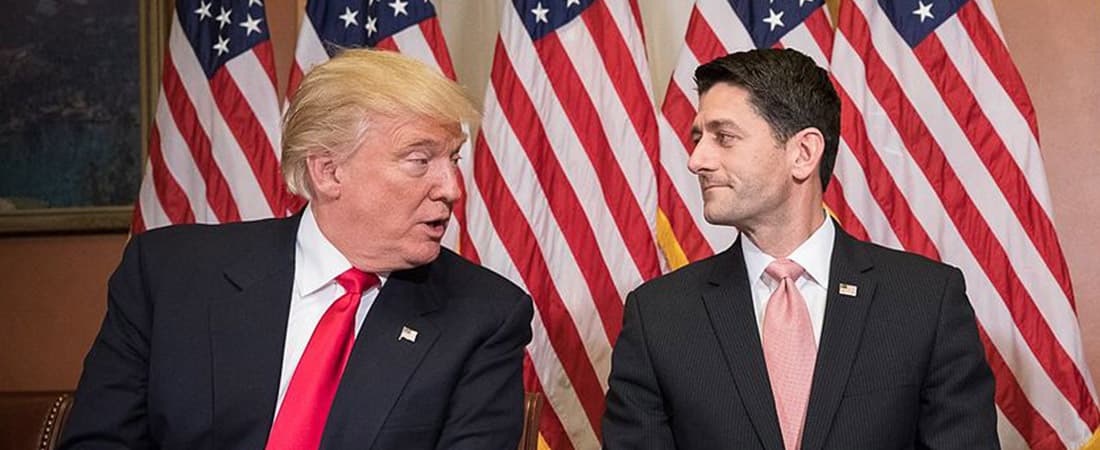Dec 20, 2017
What the Biggest Changes to Taxes in a Generation Mean for You
The Senate passed the most sweeping changes to taxes in a generation. The biggest cuts go to businesses and the super-rich.

Update: President Trump signed the tax bill into law on Friday, December 22, 2017.
The Senate passed the most sweeping changes to the U.S. tax code in a generation, voting in favor of a Republican plan early on Wednesday.
The bill, which passed by a vote of 51 to 48, is the first major legislative victory for Republicans and President Donald Trump in 2017. The president is expected to sign the bill into law by Christmas.
The plan revises nearly all parts of the tax code, according to analysis, but it provides the most significant tax cuts for business and the wealthy, while the middle class and poorer tax payers will see more modest tax savings. The average taxpayer is expected to save $1,600 in 2018, according to the Tax Policy Center.
Just as significantly, the plan will affect healthcare plans, as it junks a critical revenue stream for the Affordable Care Act. It is also expected to add up to $3.5 trillion to the federal deficit.
But how will it all affect you?
Here are the highlights of the tax plan*:
Changes for taxpayers
The bill maintains seven tax brackets, but lowers rates for five of them and adjusts income thresholds, according to Bloomberg. (An earlier plan would have reduced the number of brackets to four, eliminating the bottom rate of 10%.) For example, the plan reduces the top tax rate for the wealthiest Americans to 37% from 39.6%, and increases to $500,000 from over $426,000 the earnings threshold at which the higher tax kicks in. It jumps to $600,000 for married couples, up from $480,050.
Source: Wall Street Journal
The standard deduction–or amount of income free from taxes–for individuals and families, however, would nearly double to $12,000 and $24,000 respectively. However, the current personal exemption deduction of up to $4,150 for individuals and their dependents will be scrapped.
The child tax credit doubles to $2,000 from $1,000.
The interest deduction for mortgage debt drops to $750,000, from $1 million. An earlier House plan would have sliced the size of eligible mortgages in half.
Deductions for state and local taxes will be replaced by a flat $10,000 deduction for property taxes. Representatives in high tax states including New York, New Jersey and California have objected loudly to this change, according to reports.
Most of the tax reductions for individuals and families will expire by 2025.
Handouts for the very rich
The estate tax of 40% would remain, but only for estates valued at $11.2 million or more, or double the current estate tax value. An earlier House plan would have eliminated the estate tax entirely by 2024.
Changes affecting healthcare costs and expenses
The tax plan eliminates something called the individual mandate by 2019. The individual mandate is one of the primary underpinnings of the Affordable Care Act, known as Obamacare. It currently requires all taxpayers to purchase healthcare insurance or pay a tax penalty. Without the mandate, some experts predict massive disruption in health insurance markets, with more people losing access to health care.
The annual deduction for medical expenses will increase, for amounts in excess of 7.5% of gross income. Under current law, taxpayers may deduct for expenses in excess of 10% of adjusted gross income. Health care groups and other lobbyists criticized an earlier House that would have eliminated the deduction.
Businesses get a big break
The corporate tax rate will decrease to 21%, from a current rate of around 35%. An earlier bill would have lowered the rate to 20%. Many business partnerships will get a standard income deduction of 20%.
Small business owners will be able to write off up to $1 million in qualifying expenses annually, doubling their current deduction.
A popular student deduction stays
A deduction for student loan interest of up to $2,500 annually will remain. Earlier bills had proposed getting rid of it.
Related articles

borrowing
Oct 14, 2024
How To Use Personal Loans

borrowing
Oct 07, 2024
How To Use Cash Advances

borrowing
Oct 07, 2024
What To Know Before Taking a Cash Advance

borrowing
Oct 07, 2024
How To Pay Off a Cash Advance Quickly

borrowing
Oct 07, 2024
How to Avoid Cash Advance Fees

borrowing
Oct 07, 2024
Cash Advances vs. Personal Loans: Which is Better?
By using this website you agree to our Terms of Use and Privacy Policy. To begin investing on Stash, you must be approved from an account verification perspective and open a brokerage account.
